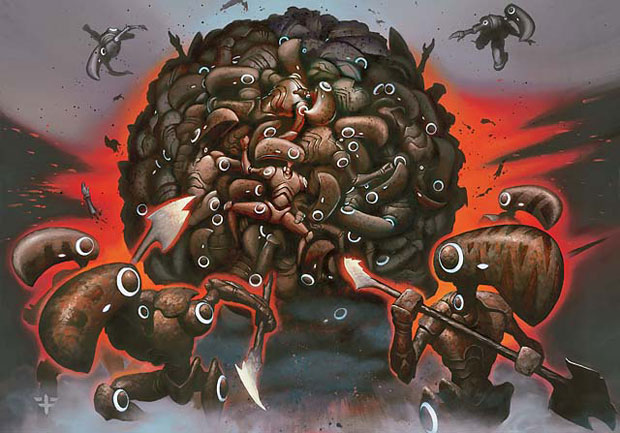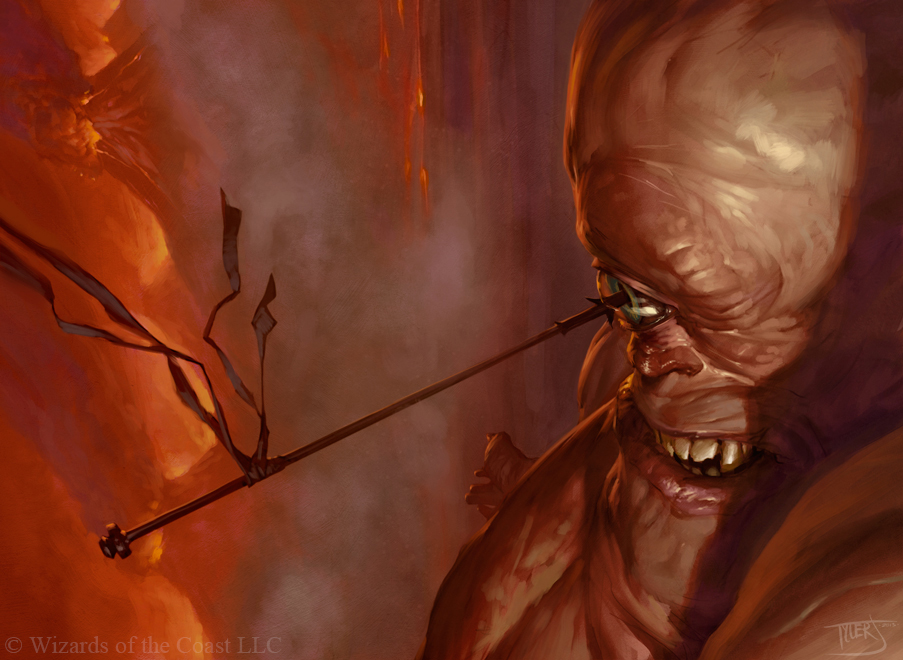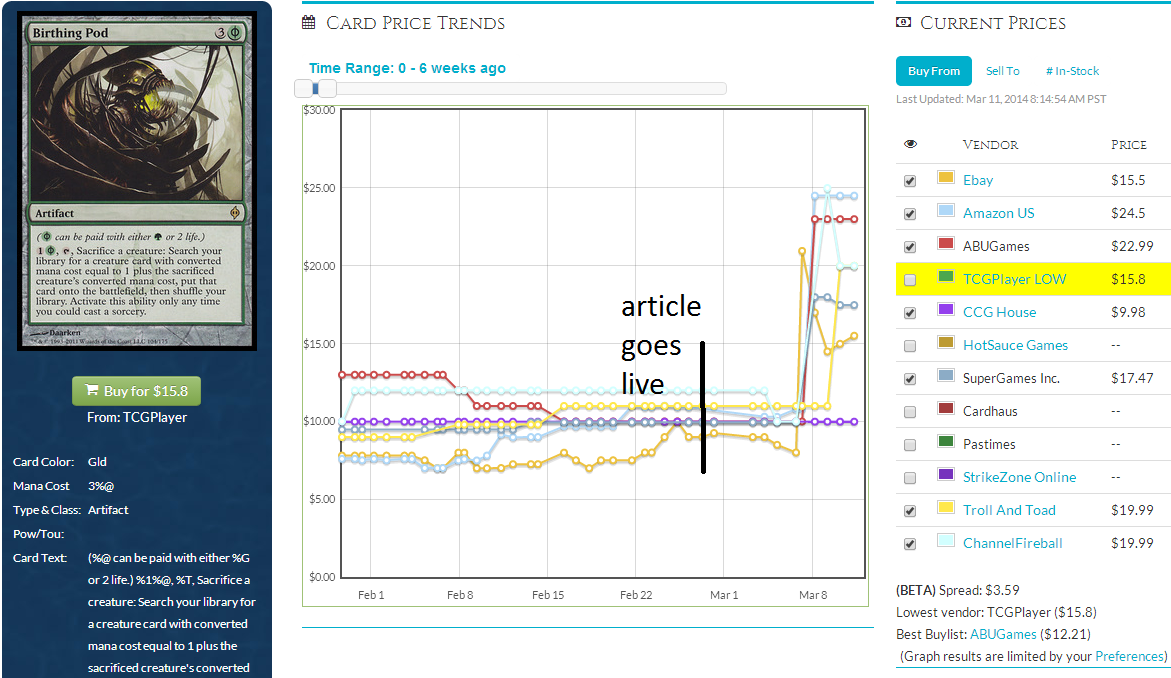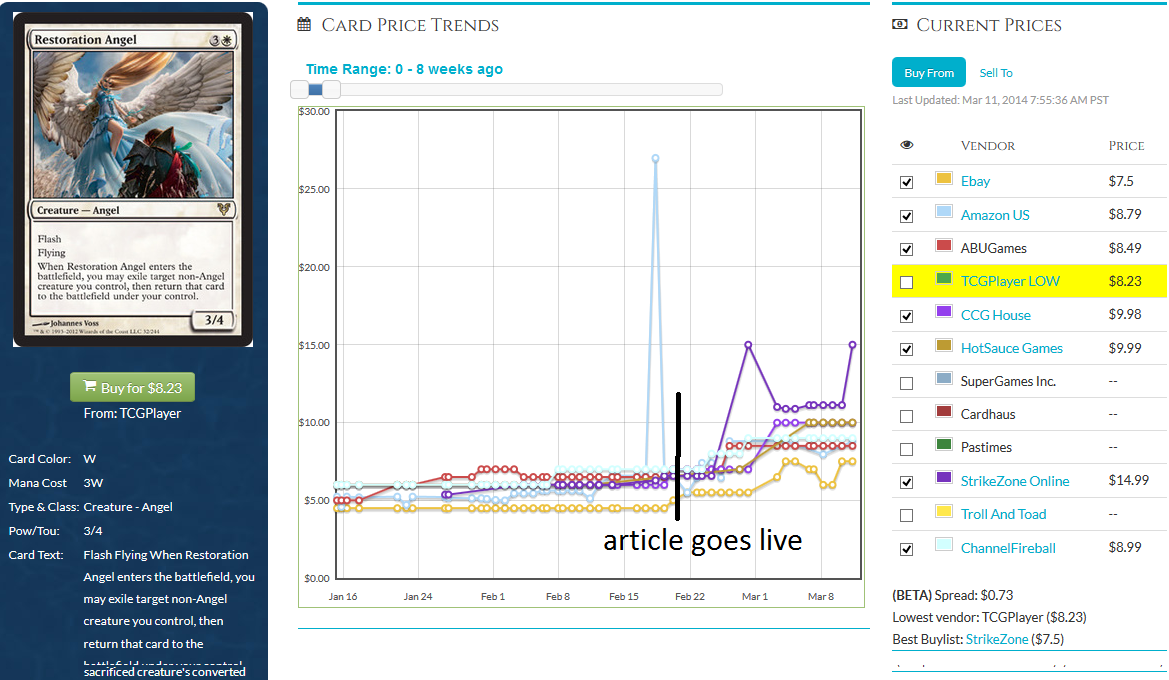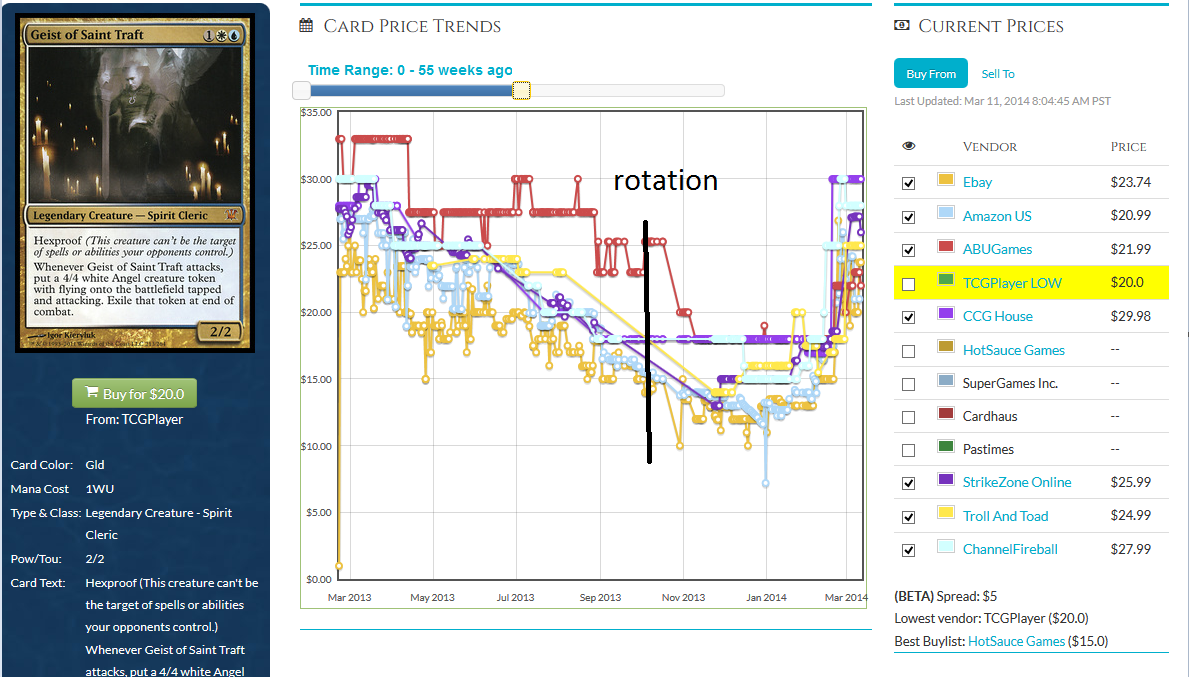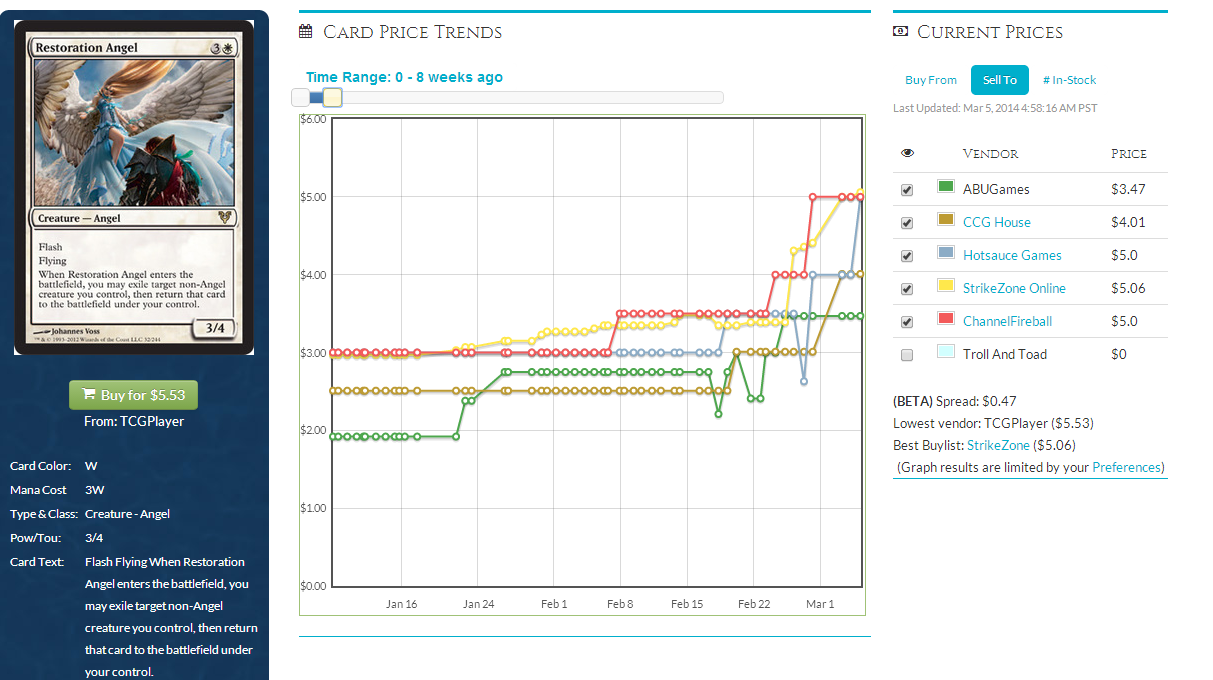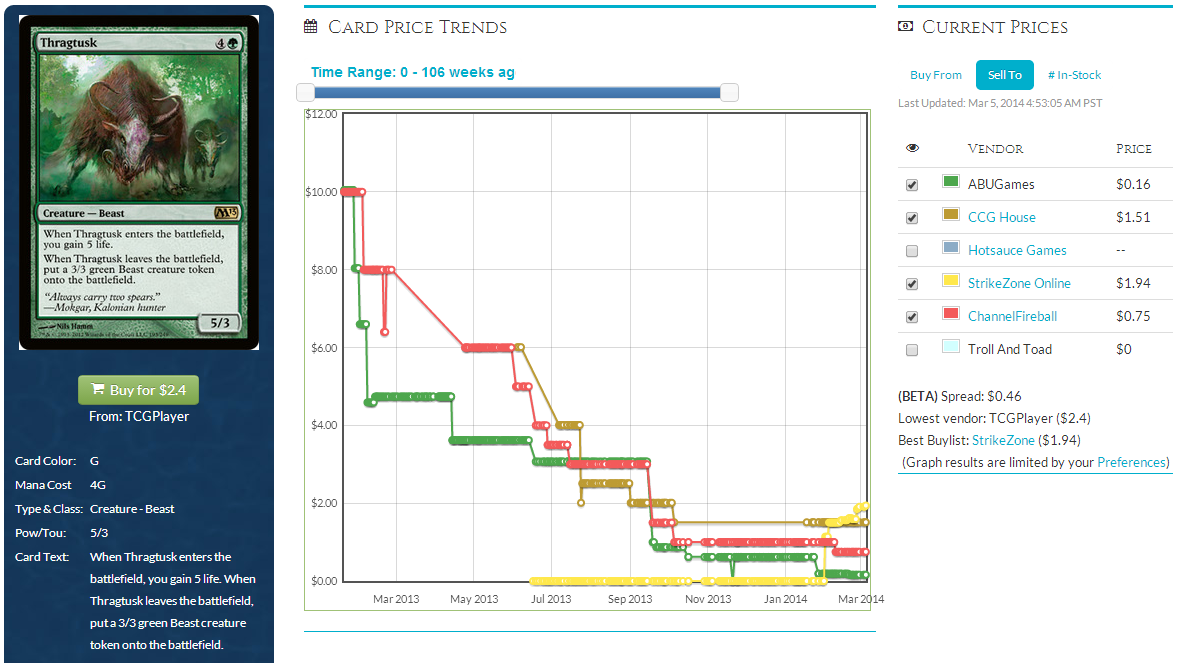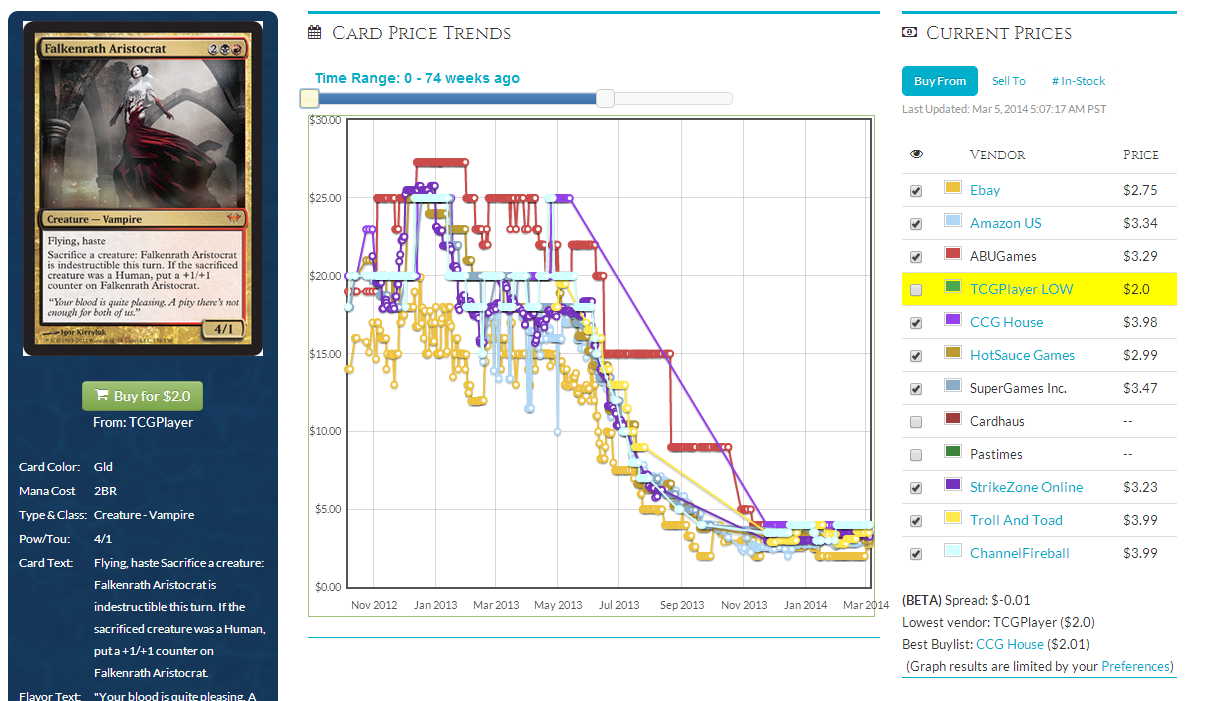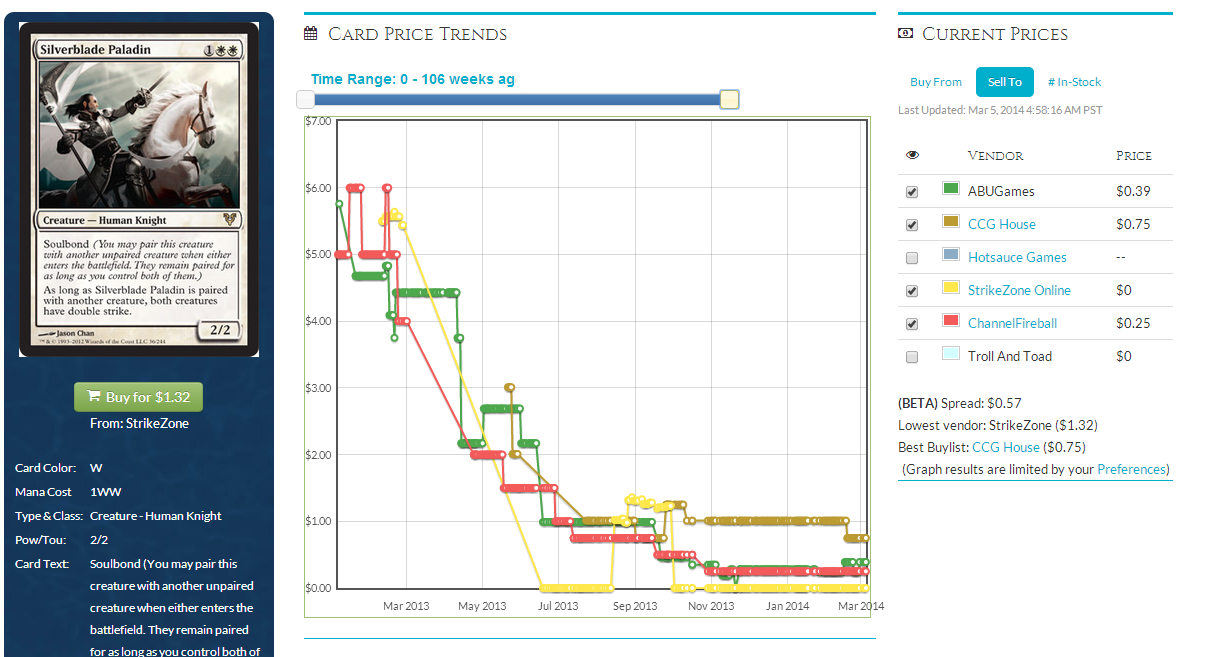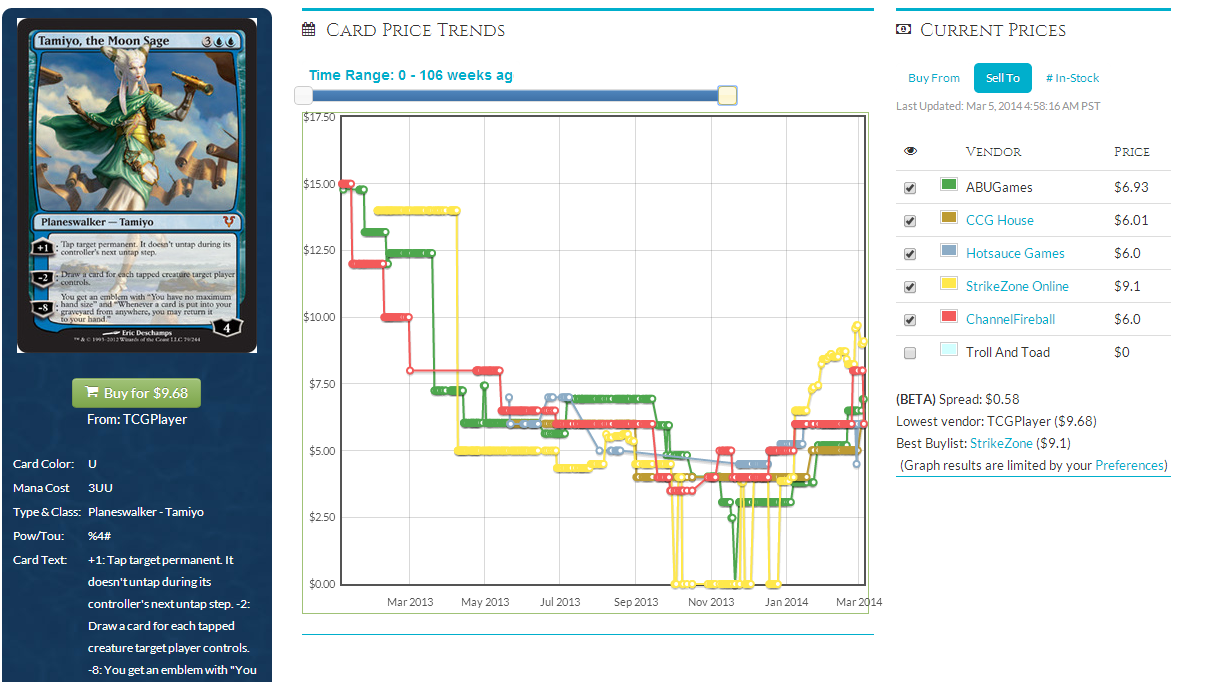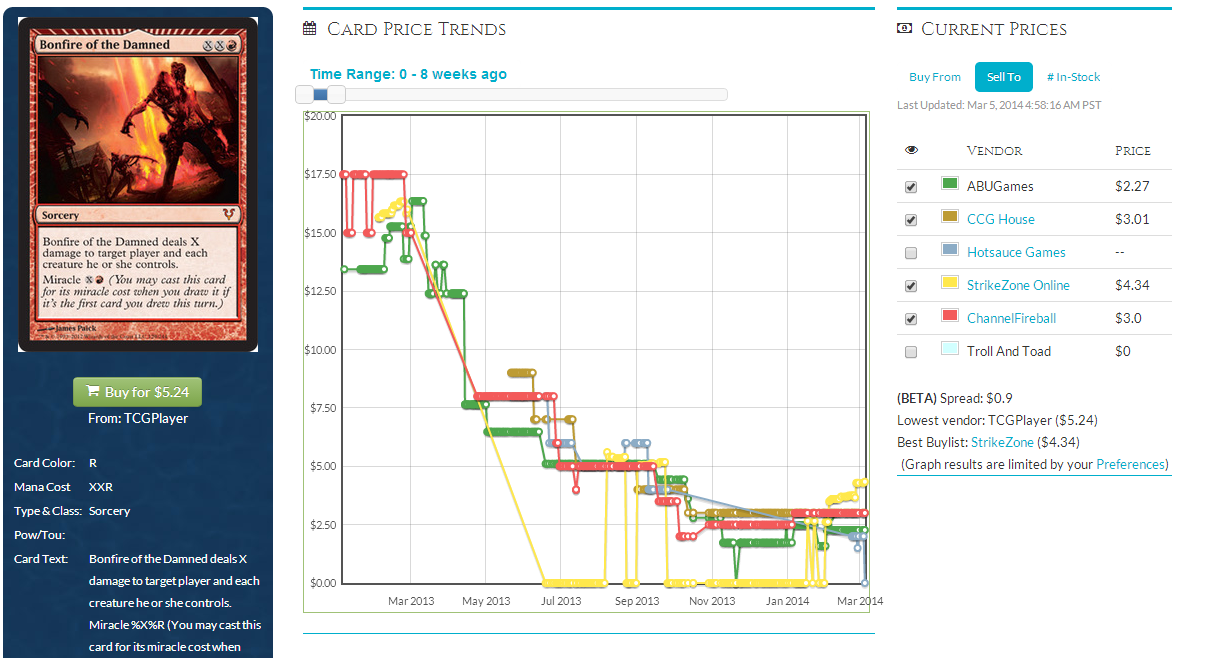By: Camden Clark
This is part two of my series on Magic Online and its financial implications.
The economy of Magic Online is “made” by the official Wizards store (and events) and the unofficial bots. This dichotomy permeates throughout every facet of Magic Online. Unofficial prices on things has to be lower than the official Wizards price or they are not competitive.
This is especially common with booster packs.
Unlike in paper, where Wizards sets an MSRP and store owners set their price, all normal set boosters cost four tickets and are adjusted to some amount lower based on supply, demand, and the price of the cards in the boosters. Some booster’s unofficial prices drop to under three tickets (Dragon’s Maze) while others stay quite close to four tickets. I have never seen a booster pack price rise over four tickets while its set was still in standard rotation.
It might not make sense why pack prices are under four tickets if there is no way to bring them into circulation outside of Wizards’ events or store.
Constructed events provide the surplus of booster packs that drive the economy. Thousands play in constructed events such as Daily Events (Swiss 4-round, prize support to 3-1 and 4-0) and 8-mans (single elimination three round, like the Top 8 of a GP). All of these provide payouts in booster packs.
When you get booster packs from doing well, you can either keep them or sell them for event tickets to get back into constructed events. The vast majority of people do the latter. This generates massive surpluses.
The people who buy booster packs use them for draft events. If the draft format is popular, the demand is huge. They will keep buying packs to use. However, draft events also give out packs as prizes. As this happens, supply will eventually outstrip demand as the draft format falls out of favor. This means booster prices will decrease as constructed players continue to enter into events.
After the next set has its release events, constructed events will switch to the next set as prize support (there are exceptions).
Why is this all significant?
It means booster prices swings are quite easy to predict. If the second set of a block’s draft format has the previous set in it, you can expect prices of the previous set to increase. This is because there will be little supply coming in from constructed events as they switched to the next set.
Boosters are a very good investment target because they are extremely liquid and have small margins. A booster pack like Theros, which was at three prior to the release of Born of the Gods, is an extremely safe target for a bulk of cash. Margins can be as low as a tenth of a ticket, which means the price only has to go up by ten cents for you to profit. They are extremely easy to sell, there are hundreds of bots devoted to boosters that will buy on demand.
Let’s talk about another facet of the Magic Online economy, the secondary card market.
The developer of Magic Online attempted valiantly to create a mechanism for players to trade with each other. However, the same problems with person-to-person trade exist. Players often get rid of cards they don’t want instead of holding on to them for trade binders. Often you will want a niche card for Modern that scouring several player’s trade binders will not yield. Card shops can hold an inventory.
These issues are magnified when card shops don’t have to mail you your cards, have little overhead for maintaining their shop other than cards, and provide instantaneous access to the cards you need for your deck.
Thus, bots were born.
Bots provide the liquidity on Magic Online. There are small bot chains of a single bot all the way up to chains of a dozen. They are quick and transactions usually take less than a minute.
This quick trading speed is the allure and downfall of Magic Online. It is easy to speculate on cards but you are almost entirely dependent on bots who set margins similar to buylists in paper.
Speculating on Magic Online is a bit outside the scope of this article; however, it’s important to know these things for paper investment. You aren’t getting the whole picture of which cards are getting bought if you aren’t on Magic Online. Knowing your way around the bots is a great way to be cognizant of the inventory of different bot chains and make buy decisions in paper.
Many run-ups happen on Magic Online before they happen in paper. More importantly, inventory changes happen first on Magic Online. Similar to the inventory data here on MTGPrice, the inventory data that is visible on Magic Online is invaluable for investment on Magic Online.
Even better, the major bot chains keep their inventory data online. Speaking of major bot chains, why don’t we go through them (objectively) as they are such an important facet of the economy:
MTGOTraders
MTGOTraders is the largest and most public bot chain. It (probably) has the largest inventory but also has much higher prices. It is one of the easiest places to find a card. They allow you to purchase cards from their website using PayPal (you don’t have to use event tickets) and you get a significant discount.
They have over a dozen bots. They have quite a few bots with normal inventory, along with buy bots. They also have some bots that serve niche roles such as bulk cards.
Although they often have the highest prices, they do a lot of volume. Often, they have the highest buy prices for older cards and pauper staples.
MTGOTraders is a very good resource to see whether you are being ripped off. It also publishes its inventory data online, updated instantaneously. That’s valuable for a variety of reasons.
They also have some decent casual-ish articles at http://puremtgo.com. I recommend them.
MTGOAcademy
MTGOAcademy is the main competitor of MTGOTraders. They have similar prices to MTGOTraders, and some similar features.
In all honesty, I have rarely used MTGOAcademy so I cannot say anything specifically about their bots or prices.
MTGOAcademy also has great strategy articles at http://mtgoacademy.com. Michael Hetrick used to do videos for them.
SupernovaBots
SupernovaBots is another major bot chain. I have some limited experience with their bots. I have only been disappointed a few times by the selection that they have, but the prices are quite good.
There is little special about this bot chain, in my opinion.
The MTGOLibrary Bots
MTGOLibrary provides a service that allows people to run their own bots. They have a pay-as-you-go service for small bot owners to pay small amounts per trade that the bot makes.
There are hundreds of MTGOLibrary bots. They all have similar user interfaces.
If you are looking for a specific card, I highly recommend going to http://mtgolibrary.com. They have a price look-up tool that searches all of the bot’s inventories for the bots with the best prices. Although sometimes not updated, you can try to search out the bots that have the lowest prices.
One of the MTGOLibrary bots that I have used a LOT due to their low prices is MTGOBazaar. I am not affiliated with them but I highly recommend them for old cards as they have some of the lowest prices (I found a Primeval Titan for four dollars cheaper than the going price). They also give free prize support to some of the Player Run Events on Magic Online which is a good reason to support them.
The F—ing Annoying Buy Bots
Annoying buy bots.
They are a plague on Magic Online.
There are hundreds of these bots that have similar formatting for their “classifieds” posting. There are maybe a few people running two or three chains. They post insultingly low buy prices for thousands of different cards and prey on players who don’t know their way around the system. They are not fair with their pricing. Under no circumstances would I sell to one of these bots. Someone else always has a better price.
A great way to spot these is if they don’t sell cards (unless they are a buy bot for a major chain of bots, like the MTGOTraders Buy Bots). They are simply going to flip your cards to a different bot. Or, do your homework and see if the prices they are giving you are reasonable or not.
I hope this evaluation of bots and how they deal with things was educational. These are important to know even if you never boot up Magic Online. Follow me on twitter: http://twitter.com/CamdenClarkMTG\ I’d love to chat with you and you can see what I’m going to write about next.
Thanks!
